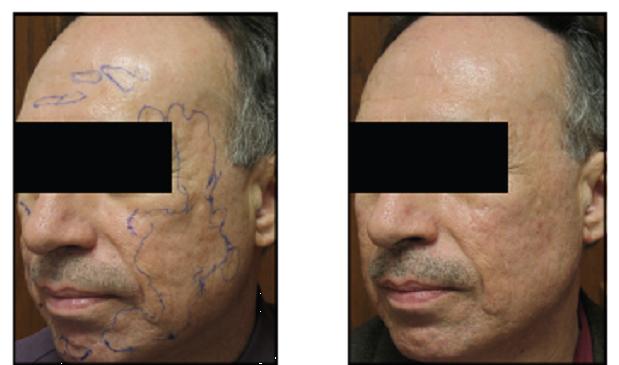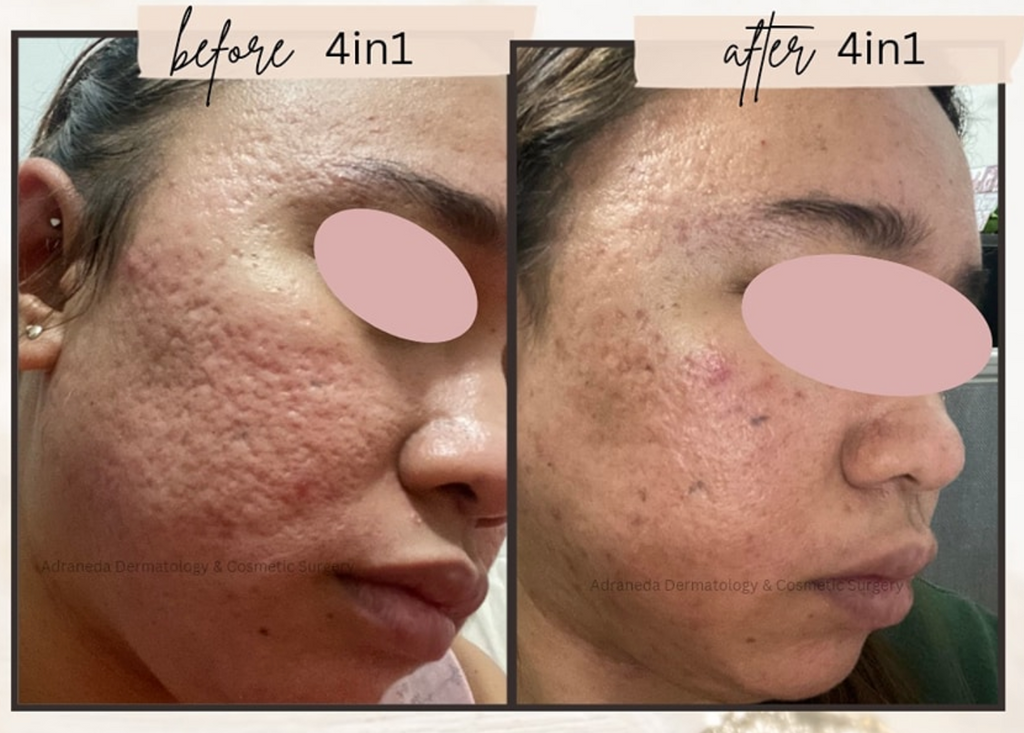Efficient Solutions for Acne Scars: Just How to Achieve Clearer Skin
Efficient Solutions for Acne Scars: Just How to Achieve Clearer Skin
Blog Article
Recognizing the Various Skin Problem and Reliable Therapy Choices for Acne Marks
Acne scars represent a complex interplay of skin conditions that dramatically influence individuals' self-worth and overall skin health. As we discover the landscape of acne mark management, it ends up being noticeable that the journey toward clearer skin may involve more than just topical services.
Kinds of Acne Scars

In comparison, hypertrophic marks result from an overflow of collagen throughout the healing process, resulting in elevated locations on the skin. These scars are typically strong and can differ in shade, occasionally showing up red or darker than the surrounding skin.
Comprehending these sorts of acne marks is important for creating an effective treatment plan - acne scars. Alternatives might consist of chemical peels, laser treatment, microneedling, or facial fillers, tailored to the specific scar kind. A comprehensive assessment with a skin doctor can help identify the most suitable intervention, thinking about the person's skin type, mark severity, and total skin health and wellness
Causes of Acne Scarring
Scarring happens as a result of the body's natural healing action to swelling and injury triggered by acne sores. When acne types, it activates an inflammatory action, causing the launch of different cytokines and development elements that promote healing. Nonetheless, this procedure can often result in excessive cells development or insufficient fixing, resulting in marks.
The primary sources of acne scarring include the seriousness of the acne itself, duration of the lesions, and individual skin kinds. Severe inflammatory acne, such as nodules and cysts, is most likely to cause scarring due to much deeper cells damages. Furthermore, incorrect handling of acne lesions, such as pressing or picking, can aggravate tissue injury and swelling, increasing the possibility of scarring.
Genetic predisposition likewise plays a considerable function; people with a household history of scarring are at a higher threat. Skin kind and shade can influence scar formation, as darker skin tones might experience post-inflammatory hyperpigmentation, while lighter skin may create atrophic marks.
Inevitably, recognizing these reasons is vital in handling acne and minimizing the potential for scarring.

Treatment Alternatives for Scarring
Effective therapy options for acne scarring vary depending upon the type and intensity of the scars. Normally categorized into atrophic, hypertrophic, and keloid scars, these conditions need tailored methods for ideal results.
For atrophic marks, which are defined by a loss of tissue, treatments such as chemical peels, microdermabrasion, and laser treatment are commonly utilized. These techniques promote skin renewal and stimulate collagen manufacturing, consequently improving skin texture. Subcision, a minimally intrusive treatment, can also work by separating coarse bands below the skin.
Hypertrophic and keloid marks can be a lot more challenging to treat. Alternatives consist of corticosteroid shots to reduce swelling and flatten the scars. In many cases, cryotherapy or laser treatment may be recommended to minimize their appearance.
Surgical alternatives are available for extreme scarring, where excision or skin grafting may be essential. It's important for individuals to seek advice from with a dermatologist to evaluate their certain mark type and go over one of the most ideal treatment plan. Combining several treatments often yields the most effective results, making sure that each person's one-of-a-kind skin problem is resolved properly.
Natural Remedy and All-natural Solutions
All-natural remedies and home remedies can give an easily accessible method for people looking for to enhance the look of acne scars (acne scars). Numerous components discovered in the home kitchen have shown informative post possible benefits in boosting skin structure and promoting recovery

An additional efficient choice is lemon juice, which acts as an all-natural exfoliant and can lighten hyperpigmentation. It needs to be made use of carefully, as it might trigger photosensitivity. Oat meal masks are additionally advantageous; their gentle exfoliation can help remove dead skin cells while soothing irritability.
Essential oils, such as tea tree oil and lavender oil, can additionally support mark recovery because of their antimicrobial homes. It is important to do a patch test before using any remedy to make sure there are no unfavorable responses. These natural options can be a corresponding approach in the journey to diminish acne marks.
Preventing Future Scarring
Taking on a proactive approach to skincare can substantially lower the danger of developing future acne marks. One of the essential techniques is to handle acne successfully as it arises. This entails using non-comedogenic skin care items and medications prescribed by dermatologists that target acne without aggravating the skin. Normal cleaning, peeling, and hydration can assist maintain skin health and avoid clogged pores.
Furthermore, staying clear of the temptation to squeeze or select acne lesions is important, as this can result in inflammation and subsequent scarring. Instead, people must concentrate on applying topical treatments that advertise recovery and minimize swelling. Components such as salicylic acid, benzoyl peroxide, and retinoids are understood for their effectiveness in handling acne and minimizing marks.
Sunlight security is another important component; exposure to UV rays can restrain and darken scars recovery. Making use of a broad-spectrum sunscreen daily can mitigate these results.
Finally, keeping a healthy diet rich in antioxidants and staying moisturized assistances skin regrowth. By implementing these precautionary steps, people can substantially lower their danger of future scarring and advertise total skin health and wellness.
Verdict
In final thought, a detailed understanding of acne marks, encompassing both hypertrophic and atrophic types, is necessary for reliable treatment approaches. Examination with a skin specialist remains critical to create customized techniques that consider individual skin types and mark extent, eventually enhancing the efficacy of mark management techniques.
Acne scars represent a complex interaction of skin conditions that considerably effect people' self-worth and total skin wellness. The two key categories of acne visit this page scars are atrophic and hypertrophic scars. These marks are more identified into three subtypes: ice choice scars, which are deep and narrow; boxcar marks, which are broader and have well-defined sides; and rolling scars, which create a wave-like look due to irregular skin texture.
A comprehensive assessment with a dermatologist can assist determine the most appropriate intervention, taking into account the person's skin kind, scar seriousness, and total skin health.
Appointment with a skin doctor stays crucial to develop tailored strategies that take into consideration private skin types and scar severity, ultimately improving the efficacy of mark monitoring techniques.
Report this page